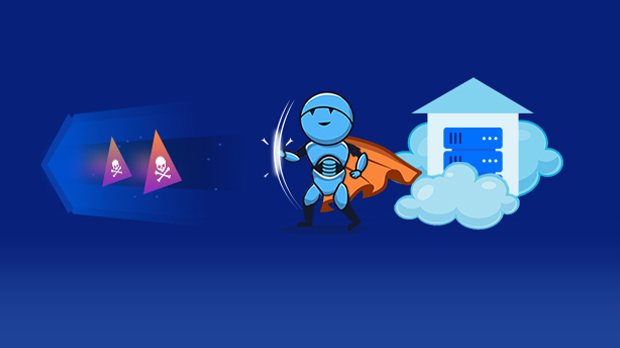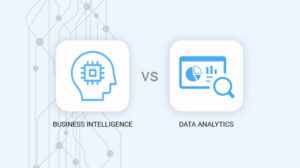Every business that has an online presence, has to ensure the safety of its customers. Several risks are involved in storing data in the cloud. Cloud Data Storage might appear safe for most users, but data security threats do exist. We have analyzed and listed some critical data security threats in cloud computing.
Critical Data Security Threats
Data Breaches
Cyber-criminals invented new ways to invade cloud data storage and employ new methods of attack. Cloud storage providers implement severe security measures, yet some data breaches threaten cloud storage. A data breach exposes sensitive customer data and trade secrets, leading to grave consequences. Companies can face lawsuits, hefty fines, or damage the brand image that can have a long-lasting negative impact.
Popular cloud services have standard several security protocols to preserve confidential information. The most effective method is to use encryption and multi-factor authentication. Regulations like HIPAA and HITECH in the healthcare industry and the EU Data Protection Directive require disclosures to the potential victim in case of a data breach.
Hijacked Accounts
Account hijacking, Phishing, exploitation of software like buffer overflow attacks, and loss of credentials and passwords can lead to a user losing control of his account. A hijacker can control transactions, manipulate data, provide false responses to customers, and redirect customers to a competitor’s site or inappropriate sites using a user account. If that account is connected to other accounts, the intruder can easily get access to multiple accounts.
A secure, unique password can save multiple data security threats. Companies should be aware of the importance of secure credentials; otherwise, their data will be at a greater risk.
Data Loss
Data loss may happen when a disk drive stops working without having a backup or when the encrypted data loses the key to unlocking. A malicious cyber attack can also cause data loss. Recently, there have been some reports of hackers gaining access to cloud data centers and breaching data security. That is why it is crucial to backup your data using off-site storage. There are compliance policies that govern data usage. You need to understand these rules to protect your cloud data from a data breach. If your client does not trust your data handling techniques, they take their business elsewhere, resulting in lower revenue.
Insecure APIs
Cloud Data connect a third-party application to a service through an application programming interface (API). Cloud services use APIs to communicate with other cloud applications & services. So, the security of the APIs has a direct impact on cloud data security. When companies grant API access to third-party services, the chance of getting hacked increases. The business might even lose confidential customer information. The best way to prevent API hacks is to implement threat modeling systems and applications into the development lifecycle. Perform a thorough code review to ensure a strong data security check.
Denial of Service (DoS) Attacks
Denial of service attacks is traditional strategies used for online operations. The assault by multiple automated requests for service has to be identified and screened out before it ties up business processes. Cyber attackers have devised sophisticated ways of conducting the assault, making it harder to detect which parts of the incoming traffic are the bad actors versus legitimate users against a modern-day botnet attack. DDoS attacks are damaging if targeted at any company’s public cloud. This type of attack can make systems slow down. DDoS attacks also consume significant amounts of processing power, increasing the bill the customer has to pay. Continuous denial of service attacks may make a cloud service expensive for its users. DoS attacks hinder processing power and affect cloud availability and speed adversely.
The best way to safeguard your cloud data is by preventing the attack from happening in the first place. Start using a Web Application Firewall (WAF), Content Delivery Network (CDN), and performing regular security audits to identify attacks faster.
Malicious Insiders
If malicious insiders are present inside an organization, the probability of data risks increases. The Edward Snowden case and NSA revelations might become a common phenomenon. You should never keep the encryption keys in the cloud but on the premises.
Lacking ‘Due Diligence’
You can evaluate cloud vendors through a process known as ‘Due diligence’ which ensures that cloud data security. This process verifies whether the cloud-service provider can offer adequate data security controls after meeting enterprise demands.
Companies generally prefer applications that have both internal on-premises and network security controls in case cloud security controls fail.
Abusing Cloud Services Infrastructure
Cloud computing offers services to enterprise users. But, the lower cost of deploying infrastructure increases the risk of attack, from a cost perspective. Service providers are fully responsible for the use of cloud services. Cloud customers will need to assess service provider behavior to see how effectively they respond. Otherwise, hackers can use cloud servers to spread malware, DDoS attacks, or pirated software.
No Employee Training
Employee training and awareness are essential tasks to ensure your enterprise-data safety. Try to know more about the common file types that cyber attackers use to invade your system. During this learning, you will have a solution which you can include in your employees’ training on cybersecurity. Educate your employees about the company as well as personal data security.
Weak Identity Management
A lack of proper authentication and identity management can result in data breaches. Poor identity management can leave gaps in enterprise data security. Multi-factor authentication systems, such as one-time passwords and phone-based authentication, should be used to protect cloud services against attackers.
Conclusion
Daton is an automated data pipeline that would seamlessly extract all the relevant Data from popular data sources then consolidate and store it in the cloud data warehouse of your choice for more effective analysis. The most important aspect of this ETL tool is that you just need to select your source and destination without requiring any knowledge of coding or Data security. As the path is predetermined, there are fewer chances of a data breach or data loss. Popular Data sources are supported, so you need not worry about insecure APIs. Moreover, there will be anyone can use this data pipeline without worrying about his data security training or identity management. Sign up for a free trial of Daton today!













